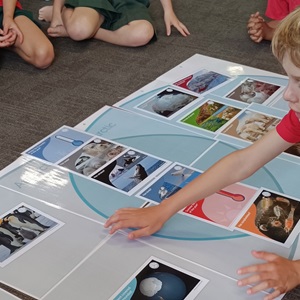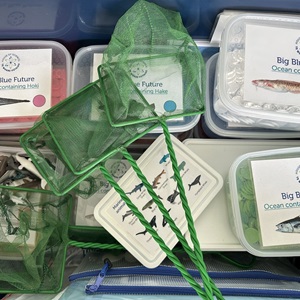Learn more about ocean science kits for hands-on learning in the classroom designed for New Zealand curriculum levels 1-4.
What is hands on learning?
Hands-on learning is a form of experiential learning, i.e. learning through experience. In the classroom, this can mean building things, playing games, and interacting with objects. Hands on learning can be more stimulating and memorable for students aiding comprehension and retention.Hands on ocean learning for the classroom
In partnership with the House of Science, we've developed hands-on learning resources to build ocean literacy in the classroom.
House of Science kits are:
- packed full of all the materials needed to carry out engaging science lessons
- bilingual in English and te reo Māori
- delivered to schools using a subscription-based library system.
Hot of the press

Find out more about our House of Science Kits and the new Antarctica Kit
Jane Hoggard (Kit Developer) and Sandra Kirikiri (Business Development Manager) from the House of Science share the inside info on House of Science Kits and how they work, the kit development process and their favourite bits in the new Antarctica Kit.
Explore House of Science kits

About the House of Science
Visit House of Science to discover how to subscribe to use their resource kits.

Big Blue Future Kit / Anamata Kikorangi Nui
Why do fish come in so many different shapes and sizes? What does sustainable fishing mean? The Big Blue Future kit introduces learners to how the ocean is essential to protecting our planet.
.tmb-thumb300.png?Status=Master&Culture=en-AU&sfvrsn=6b2b4556_1)
Antarctica Kit (Launch on World Ocean Day 8 June)
This kit will introduce the science related to fishing in Antarctica and the Southern Ocean, such as Antarctic food webs, how the Antarctic and Arctic ecosystems differ, and the importance of sustainable fishing in the Southern Ocean.
Explore more

Featured{{item.Headline}}
{{item.Description}}

